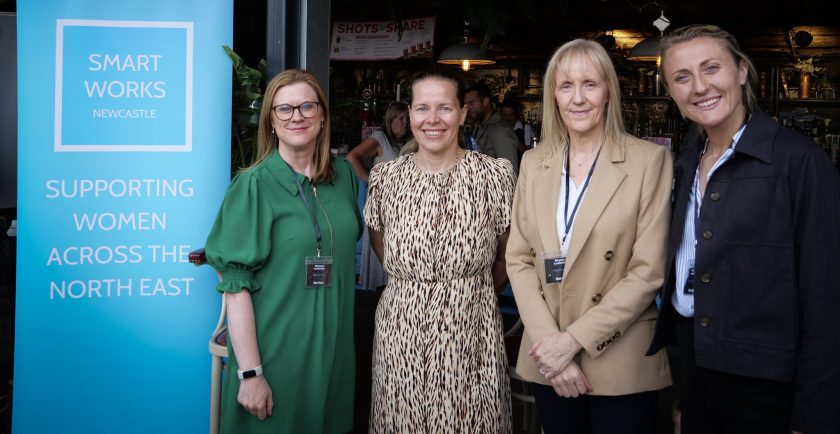
Private Equity Investment: Sharing Ownership without Losing Control
10 min
In our five years as an Executive Search firm, Blair West are proud to have built valuable relationships with businesses and investment funds throughout the UK.
We have been there for successes and supported clients and investors at more challenging points.
Through this experience, we have built insight into the private equity investing process from both sides of the fence. Both myself and CEO David Blair also lean on come from corporate finance backgrounds
What we hear from business owners
For businesses seeking private equity investment, one of the challenges we hear most often is the desire to stay in the driving seat.
Who’s driving? Who’s looking at the map?
For family-owned companies or founders who have nurtured a company to profitability with a combination of blood, sweat, and tears, the idea of potentially relinquishing control as a consequence of bringing on board external investment is tricky.
The appetite for financial investment to take a business to its next level is often countered by a perception of PE investment as a potentially combative process.
What we hear from the Private Equity industry
For private equity firms, it is essential for prospective investment processes that management teams are aligned on the road ahead. Moving a company to a new, accelerated stage of growth requires a clear-headed vision.
Does this road lead to a motorway?
It may be refreshing to hear, but in our experience, no private equity investors are interested in spending their time or money on an acrimonious exercise.
Private equity firms want to ensure a return on their investment, which can inevitably come with difficult conversations. The potential return on such deals will always be maximised.
However, the process will only proceed if a company and, crucially, its management team are on the same page regarding the company’s current state and the next steps of development. Other factors such as market risk of the target company will also be taken into consideration. If you’re interested in understanding what a “Private Equity-ready” leadership team constitutes, we’ve written a previous blog series about the topic. You can read the first article here.
Our five in five
Here are our top five observations for business leaders seeking investment and considering how to make a PE relationship work.
1) Consider all growth capital options
It’s essential to consider whether private equity funding is the right source of capital at all. If the long-term goal is value creation, sourcing investment in your company to fund growth is a tried and tested route to achieve value aspirations, but this can come in many forms.
Due-Diligence
There are multiple sources of finance available to facilitate growth, with many not requiring the sale or exchange of shares, at the same time as bringing on board expertise that drives growth. Avenues such as debt financing, venture debt and government grants would allow you to stay fully in control of your operations, whilst routes such as angel investors, business incubators and accelerators, and mezzanine financing could offer alternative hybrid/flexible options.
Seats at the table
Private Equity investment involves bringing at least one, but typically two or three, additional stakeholders to the board room. For many companies,, these fresh perspectives can be a huge factor in setting an agenda that strives for growth and then delivering against that agenda.
Private Equity
We’ve seen this board-level impact become instrumental in developing a cohesive culture within a company. PE investment has many benefits, but assessing if it is the right choice for you is essential.
2) Clarity of Vision
Before initiating a first conversation with a potential investment firm, it’s crucial to have a clear idea of what you are asking for and how much you are willing to give away in exchange.
Blinkers off
Setting clear objectives well in advance of raising finance is all about returning to core values and priorities. Now is the time to assess whether current resources, capabilities and organisational structures support these goals and where future financial sponsors may be able to bridge gaps.
Challenging the status quo
Looking at broader market dynamics and opportunities is fundamental; it’s prudent to consider what is required to work with the market rather than against it to stay ahead of the curve.
Before any investment process, it’s important to discuss potential changes in direction, pivoting the company to capitalise on opportunities or mitigate risks.
Funding priorities
If investing in research and development is a priority, finding new strategic partnerships, or expanding into new markets, be clear in your approach to funders about how they can assist and where exactly you need support.
We’ve observed business leaders with this clarity of vision entering into investment processes with an innate sense of control and security, having already built up a solid understanding of what is needed to move forward.
3) Avoiding scepticism building trust
Taking the time to choose a PE partner wisely can mitigate potential bumps in the road. Once a process is set in motion, it is key to retain a clear focus on the points above. Are you aligned on values and aspirations for success?
Open Doors
The businesses we’ve seen handle processes most successfully are the ones that get comfortable with investment partners being in the boardroom for the next three years—moreover, those who see this as an opportunity rather than a threat.
Choosing a partner whose values and aspirations align means this can be an open and transparent relationship with respect on both sides.
Egos aside
Access to capital also means access to people, expertise, and different viewpoints. This can lead to quality strategic guidance, but only if there is a collaborative partnership that allows guidance to be given and also received.
Trust is often foundational for aligning goals, building confidence among a peer group, and enhancing the chances of long-term success.
Alignment
It cannot be overstated that the core principles of the PE investors should align with those of the company to avoid attrition and separation of strategic goals. This can only happen with careful planning and preparation in the first stages of any potential process.
4) Persistence persistence persistence
Many businesses we have worked with report that a private equity process is like stepping on the accelerator. However, getting to that point often requires a persistent and long-term attitude.
The build-up
Once a PE investment is made, working life may speed up considerably. Even leaders who have previously thrived in dynamic environments can feel an upward surge in pace and expectations.
Resilience is undoubtedly needed to navigate the ups and downs of the fundraising process, as well as relationships with investors and stakeholders.
Shifting gear
A private equity fund is looking for businesses with the potential to deliver a substantial return on investment for all stakeholders in a relatively short time, typically between three and five years. The rule of thumb is that they aim to double their money in three years or triple it in five years.
Speed awareness
It can be useful to consider the impact of “role modelling” on the wider business ahead of investment. The PE journey can be tough, with lots of new developments happening in the company in a short space of time, which can be unsettling, so expectation-setting is key.
Resilient leaders help sustain motivation and morale by fostering a sense of purpose and optimism, even during challenging times.
5) Aim at the goal
Forgive the football pun… In conversations we’ve had with PE-backed business leaders nearing the end of their investment cycle, one common aspect they note is the importance of keeping that end goal in sight.
Your goal
Having a clearly articulated plan and making decisions throughout the journey that takes a step closer to achieving that end goal is key.
Flexibility
Of course, changes may and will occur during an average four-year PE process, and, as expressed above, it’s crucial to roll with the punches, but keeping a steady course towards the finish line is often highlighted to us as a sanity-saver.
Having the right experience and support provided by a Non-Exec Board, often from a Chairperson appointed on the initial investment, is key in this process. The most successful leaders, in our experience, have utilised this support throughout the journey, leveraging the “been there and done it” experience of a Chair or NED in good times and bad.
The Journey
Pulling in the same direction on a PE journey involves three things:
a) needing to know what that direction is;
b) being in alignment about how to get there, and;
c) having a clear approach to measuring that progress is being made.
With these three parts in place, we’ve seen that PE investment processes can be harmonious, mutually beneficial experiences.
If you’re a founder looking to “step on the accelerator” and have decided PE investment is the way to go, Blair West can help you prepare. Whether through advisory conversations, helping to identify areas that an investment committee may question, strengthen your leadership team prior or potentially making introductions. We’d be keen to chat. Please reach out to me at [email protected]



